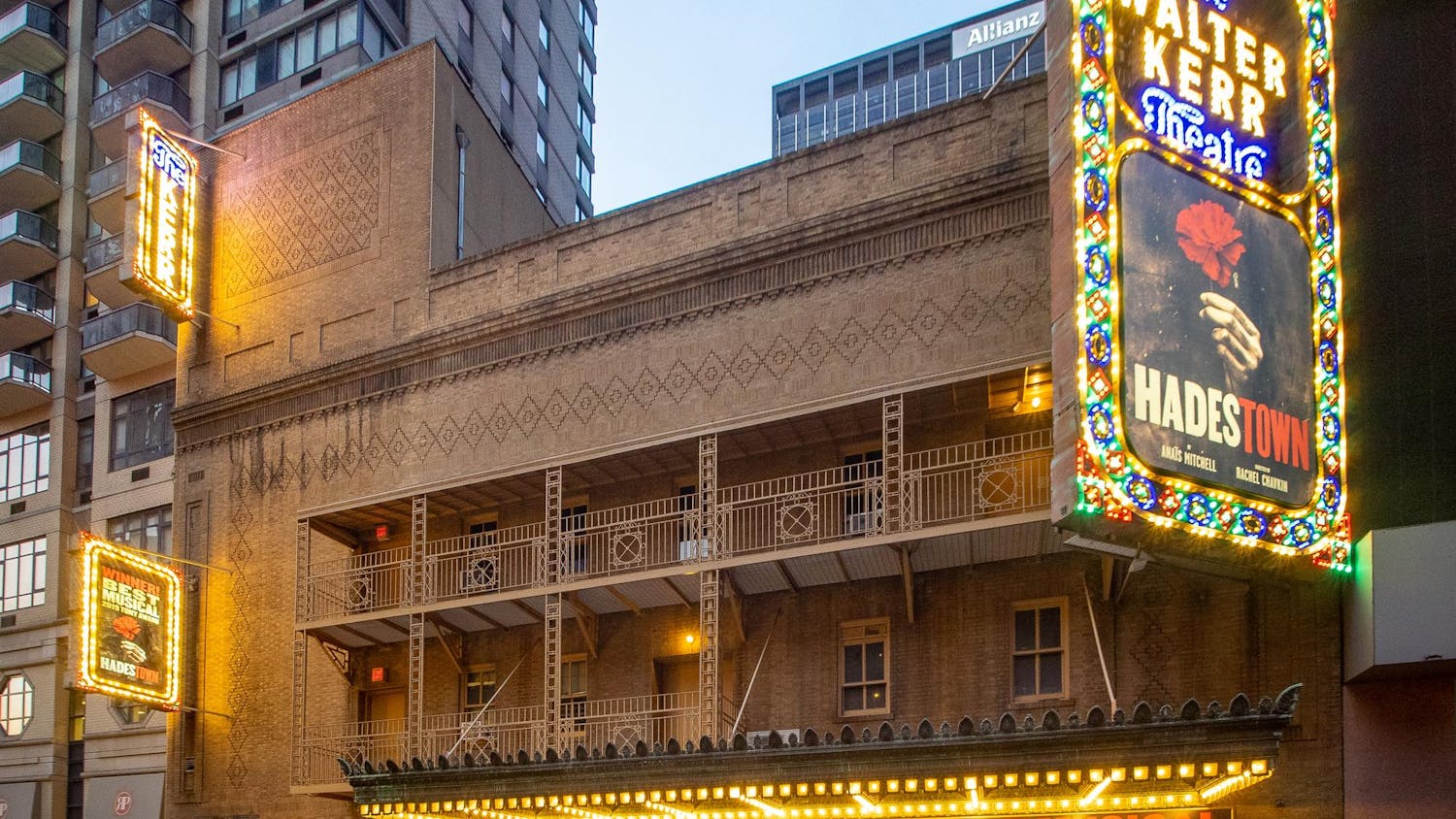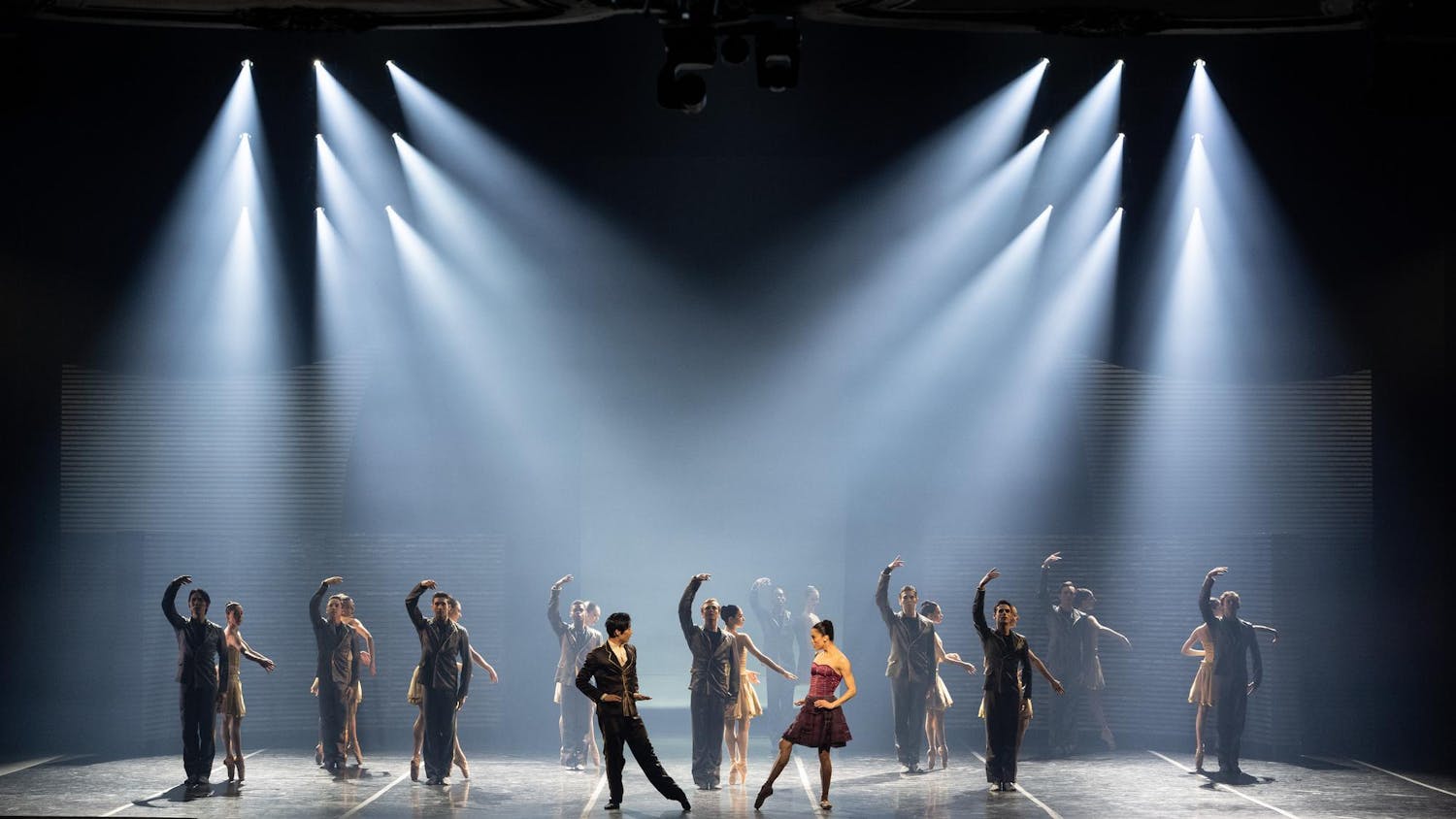Madness isn’t exactly something to crash right into — there’s no cannonballing into a pool of insanity. Rather, it’s more likely that losing one’s mind is a slow wade through icy water, waves roaring and foaming. But there has to be a source to madness — not a moment that causes a mental break, but rather an origin where it all began. In one of its first and most haunting scenes, “The Lighthouse” (2019) drags the viewer into the sea with Ephraim Winslow (Robert Pattinson) — who has just started his four week shift as a lighthouse keeper along with the older Thomas Wake (Willem Dafoe) — as he sees something in the waves and goes in after it. What he sees is the memory of his underlying guilt, fear and self-destruction. And that memory is where his slow wade into madness begins.
“The Lighthouse” is no doubt a film to marvel at. Its 1.19:1 aspect ratio forces the viewer to focus on what’s being shown — there’s no space for any eyes to wander or hide from what’s happening. Black-and-white and shot on 35mm, it feels richly textured. “The Lighthouse” is a film that feels old, or at least mythological when compared to the green-screen superhero movie explosions of today. Director Robert Eggers is a filmmaker to reckon with. It stars two incredibly talented actors, and Pattinson’s performance no doubt adds to the confirmation that he is the best actor of his generation. But “The Lighthouse” isn’t just a cinephile’s wet dream. It’s a nightmare.
On a New England island in the 1890s, Winslow and Wake complete their lighthouse keeper duties — which for Winslow feels like an endless to-do list. At dinner, the two eat what quite literally looks like sludge — could be beans, definitely not tasty — and then Wake begins his duties, which include a rendezvous with the lighthouse. He refuses to let Winslow inside the lantern room, locking it when he isn’t there. It becomes clear throughout the film that Winslow has a past he isn’t sharing, and while he certainly might think that this small and salty island is the perfect place to escape, it’s actually hell on Earth.
Winslow and Wake spend their nights getting drunk, and Winslow spends his free time getting off — he finds a mermaid statue inside his bed early in “The Lighthouse,” and it spurs something in him. After finding this statue, a mermaid begins seemingly to haunt Winslow, but it’s a sexy haunting, if there’s such a thing. For Wake, the lantern room is something similar, although it’s unclear what’s actually there for Wake to enjoy. But the film presents many images that feel innately perverse. There are seagulls everywhere, but they simply will not mind their own business. Wake warns Winslow to leave the seagulls alone because they contain the “souls of sailors what met their maker.” That’s certainly an eerie and superstitious thing to tell someone.
That eeriness is under every rock in “The Lighthouse.” There’s a mythology in this film that oozes creative inspirations, from literature and film to urban legend and the sublime and Gothic. During a rather violent storm, the waves are taller than mountains and the water crashes through the living quarters the Winslow and Wake share. At one point, Wake is an image of a barnacled monster. Oh, and there’s plenty of tentacles, with slime dripping off rows of suckers. And yet, these might just all seem like moments meant to terrify viewers. But they’re sensible and deliberate inclusions in a film where the plot is not the most important thing. Winslow is the core, and as the mythology of the island and the lighthouse begin to worm inside his mind, he breaks. He wades deeper and deeper into the insanity.
For Winslow, the past is dreadful and his current descent into madness is torturous and taunting. But there has to be some reason behind the lighthouse and why Wake keeps it all to himself. While Winslowseems to disrespect the island, Wake is a part of it. There’s a jealousy between the two, a jealousy which rears its ugly head after long workdays, once the two have sat down to drink and talk. It festers inside Winslow’s mind, and while he certainly wants to get off the island once his four weeks end — then again, this island seems to exist outside of time and space — there’s a part of him that must know what’s inside that lantern room. It’s a strong curiosity to open Pandora’s box.
Until its very last breath, “The Lighthouse” takes the viewer by the hand into the salty sea. It’s a guilty pleasure to watch Winslow go insane and Wake already be there. And in its final moments, which are prophetically destructive, the film drops the viewer off the deep end. While it might be difficult to sympathize with Winslow throughout his time as a lighthouse keeper, it’s impossible to be disinterested in his journey to make sense of the mythos around him. Between the brine and barnacles, there’s something grim inside “The Lighthouse,” and good God, who doesn’t want to know what it is?
The wet weirdness of 'The Lighthouse'

A promotional poster for 'The Lighthouse' (2019) is pictured.
Summary
"The Lighthouse" is a wade into the icy cold sea, a journey full of mysterious mythos and set on an island existing outside of time and thought.
4.5 Stars





